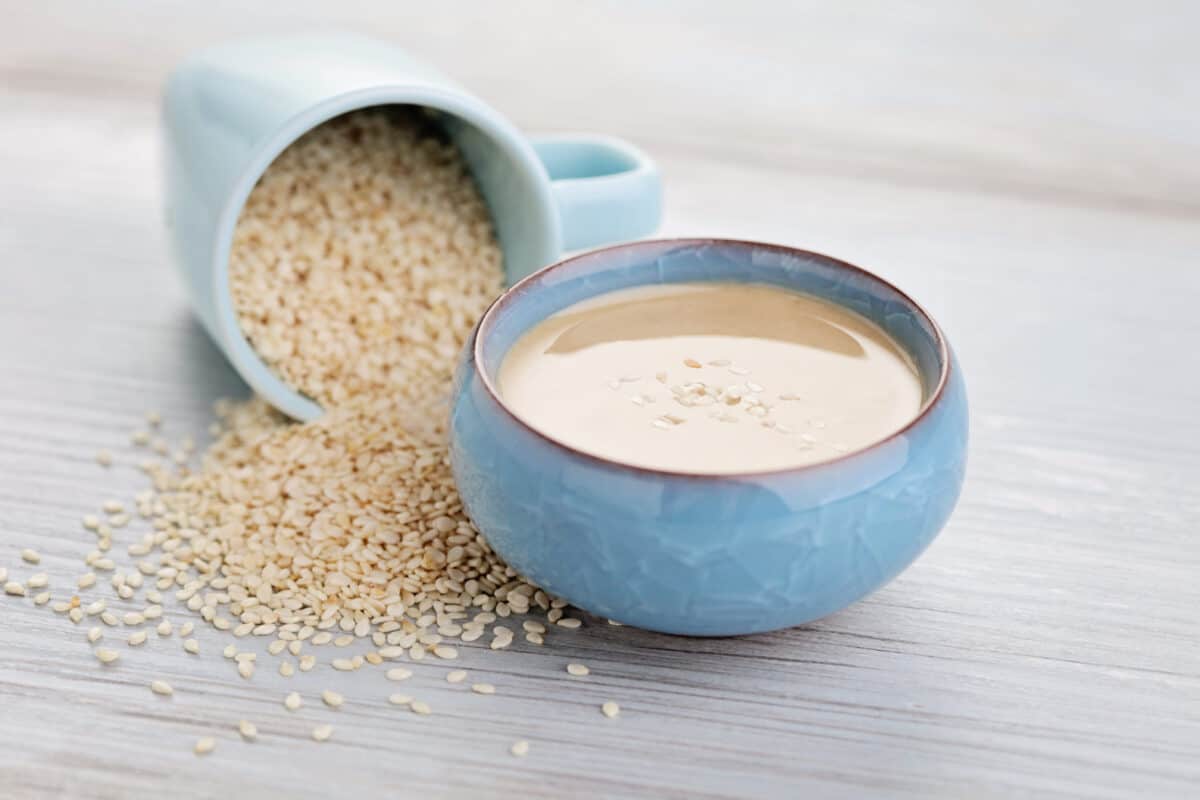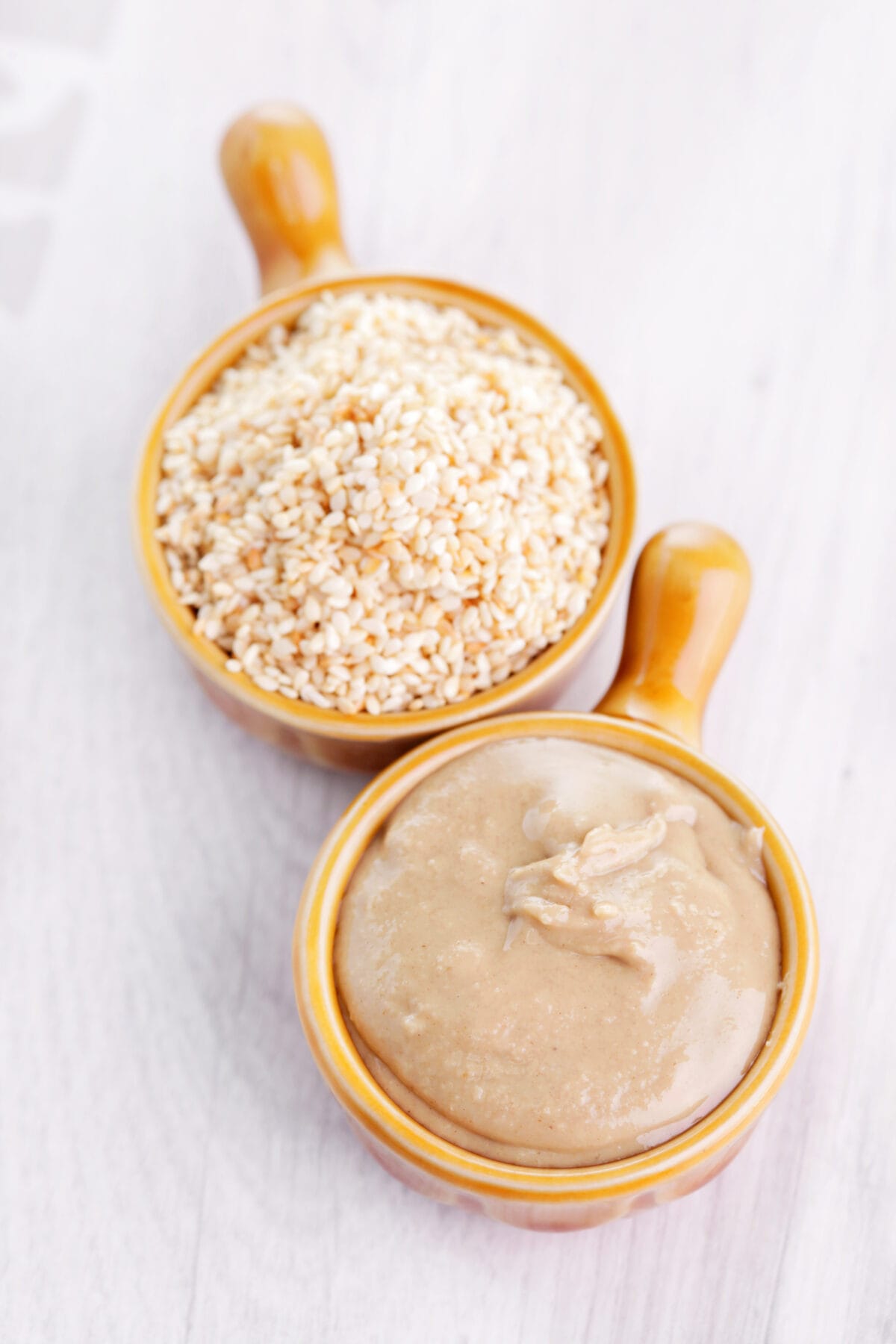Tahini is one of those things that everyone in the Middle East is familiar with, but maybe not necessarily in the West. To help break down this cultural barrier, why not learn precisely what tahini is and how to make it yourself?
Not sure how to use tahini, why not start with this Baba Ganoush Recipe? Or you could serve some tahini alongside this Fast and Easy Greek Grilled Eggplant recipe!

What is Tahini?
Tahini, also known as sesame paste in some supermarkets, is a versatile and delicious ingredient that has been a staple of Middle Eastern cuisine for centuries.
Tahini has this rich, nutty, slightly bitter flavor that adds a huge amount of depth to anything you serve it with.
Alongside its use as a dip, tahini is a critical ingredient of other recipes like hummus, as well as the main flavoring agent of certain lamb marinades and other Middle Eastern dishes
But just what exactly is tahini? And what are all of the different ways you could use it?

What Is Tahini Made Of?
Tahini is basically a ground sesame paste, made by crushing or grinding together a whole bunch of sesame seeds.
While it might seem strange to look at a pile of sesame seeds and imagine them turning into a liquid when crushed, it is basically the same principle as making peanut butter out of peanuts.
The key is that sesames, like peanuts, are incredibly oil-rich, and when that oil gets released from the seeds by crushing, they help to emulsify the ground parts and turn it all into a thick, luscious paste.
Considering that sesame seeds are little more than a ground nut paste, it is surprising just how rich and intensely flavorful they can be.
This rich sesame paste is useful almost immediately after crushing and mixing it, though it does benefit from a little bit of time to cool down, as the act of crushing the seeds can actually make them pretty warm, which can dull their flavor.
How To Use Tahini
Tahini is one of those ingredients that can be used in a thousand different ways, but few people outside of the Middle East really know much about it.
The most common use of tahini in modern culture is its place in hummus, that creamy chickpea-based dip.
When blended with oil, garlic, and chickpeas, tahini acts as an enriching ingredient – it gives the whole thing nuttiness and depth, as well as that little hit of savoriness that the hummus would be pretty weird without.
Lesser known uses of tahini are things like baba ghanoush, or halva, which is a sort of fudge-like dessert made by combining tahini with hot sugar syrup or honey.
However, alongside tahini as an ingredient, tahini is probably most used as a dip or condiment. Though its flavor is pretty strong for those that aren’t used to it, you can dip pretty much anything into it.
From pitta bread to meat, tahini is one of the most versatile ingredients you can have in your kitchen.

Could You Make Your Own Tahini At Home?
Tahini is commonly bought at the supermarket, especially in restaurants around the world, but it is actually super easy to make it at home.
Considering sesame seeds are pretty cheap, basically, anyone can make tahini at home if they wanted to.
It can be as simple as taking as many sesame seeds as you want to use and crushing them into a fine paste.
This can actually be a lot harder to get it down into a smooth paste than you might expect, however.
First of all, you need to toast your sesame seeds, as this helps the outer husks break down, as well as helps to release all of its oils.
For breaking them down, if you want to crush them with a mortar and pestle, you will probably find that the sesame seeds just don’t seem to want to crumble apart.
A little bit of salt added to the mortar and pestle will help a lot, as it will act as an abrasive and make it a bit easier.
If you want to be lazy and just blend it all together in a blender, you might find that the sesame paste gets stuck at the bottom and the blades just spin pointlessly.
If this happens, try adding a little bit of room temperature oil in a steady stream as the blender runs, as this can help the seeds to catch on the blade and help break it down.
The main problem with making tahini at home is that you are actually trying to break both the sesame seed itself alongside the husk that coats each seed.
In the factory, sesame seeds get soaked in salt water to help the bran separate away before the finer seeds get blended into the smooth paste you see at the stores.
Since it is a lot of bother to try and separate all of the husks yourself, you might find a bit of salt and a little extra oil helps make the whole process a lot easier.
Looking for more great Kitchen Tips? Try these out:
Happy Cooking
Love,
Karlynn

PIN THIS to your Sauces Recipe Board and Remember to FOLLOW ME ON PINTEREST!













Leave a Comment or Recipe Tip